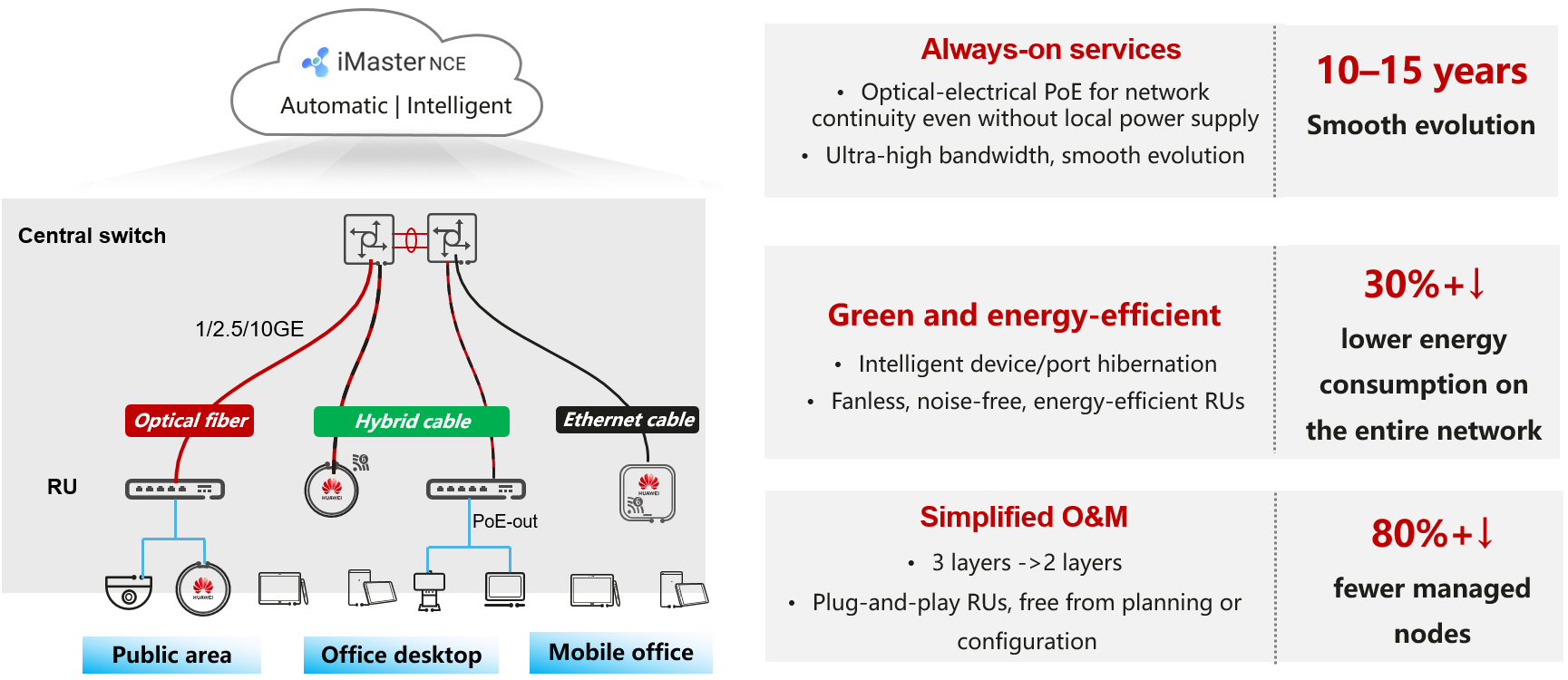What Is a Green and Low-Carbon Network?
With the rapid development of cloud computing, big data, artificial intelligence (AI) and other technologies, data centers are becoming increasingly hungry for computing power and bandwidth but also face exponentially growing pressure on energy consumption. To achieve green and low-carbon networks against this backdrop, we need to improve the computing capability and reduce the energy consumption per unit of computing power for data centers to get the most out of each kilowatt-hour of electricity.
Why Do We Need a Green and Low-Carbon Network?
The Internet has penetrated every corner of our lives, and data is generating greater value than ever, presenting enterprises with new business opportunities as well as new changes and challenges. Driven by cloud, big data, and AI technologies, data centers have become value centers of enterprises. They are becoming increasingly hungry for computing power and bandwidth but also face exponentially growing pressure on energy consumption. As such, smarter and more energy-efficient integrated data centers are being constructed at an accelerated pace.
As the demand for data centers grows and the scale of data center construction increases, conserving energy is becoming an increasingly pressing challenge. According to the latest statistics from the China Academy of Information and Communications Technology (CAICT), by the end of 2021, China's data centers had a combined total of more than 5 million standard racks. From a macro perspective, the annual power consumption of data centers around the world exceeds 200 billion kWh. All of this means that transforming data centers towards green and low carbon should be top of the agenda.
As the computing power of data centers and the network bandwidth keep increasing, so too does the energy consumption of data centers. Yet the significant increase in energy consumption cannot be fully offset by merely utilizing renewable resources. To further save energy and reduce emissions for data centers, we need to think outside of the box. More specifically, we need to improve the computing capability and reduce the energy consumption per unit of computing power to get the most out of each kilowatt-hour of electricity.
How Can We Construct a Green and Low-Carbon Network?
Huawei Hyper-Converged Data Center Network Solution
Leveraging lossless Ethernet networks, Huawei's Hyper-Converged Data Center Network Solution enhances network capabilities to maximize computing efficiency while minimizing the energy consumption per unit of computing power, thereby enabling green data center networks with optimal computing power.
- Lossless Ethernet, unleashing infinite computing power: Drawing on the iLossless 2.0 algorithm, Huawei's Hyper-Converged Data Center Network Solution implements the industry's first Ethernet with zero packet loss. In this way, it builds a large-scale, low-latency, and high-throughput computing power network, unleashing 100% of the computing power. For example, in the high-performance computing (HPC) scenario, the lossless Ethernet delivers 17% higher computing efficiency than the InfiniBand network, shortening the overall computing time.
- Energy saving and lowest power consumption per unit of computing power: CloudEngine data center switches use core heat dissipation and power supply technologies such as SuperCooling, delivering 54% lower per-bit power consumption than the industry average and 47% lower power consumption per unit of computing power than the traditional Ethernet.
- Green and low-carbon manufacturing: Based on the principle of "no use, less use, and reuse", Huawei CloudEngine data center switches achieve sustainable low-carbon manufacturing. For example, the material saving design characterized by "reduction and paperless" ensures no material waste; the energy-saving design characterized by "slight power consumption and lower carbon emission" prevents overtesting.
Huawei Intelligent Simplified Campus Network Solution
Built on the innovative simplified architecture, Huawei's Intelligent Simplified Campus Network Solution simplifies campus networking for easier campus network planning and deployment as well as routine O&M. Specifically, low-power remote units (RUs) — integral to this solution — are deployed on desktops, slashing cabling by more than 75% on the campus network and reducing the power consumption of the entire network by about 30%. In this way, a simplified, low-carbon, and always-on campus network is built for global customers.
- Simplified architecture: One network is managed as one logical device, enabling unified access of network-wide terminals. Based on the innovative simplified architecture, central switches can flexibly expand ports through RUs. A single fixed switch can connect to 384 wired terminals at the same time.
- High energy efficiency: RUs adopt the fan-free natural heat dissipation design and use ultra-low-power chips and components. The power consumption of a single port on an RU is less than 1 W, helping reduce power consumption by about 30% compared with the industry average.
- Always-on services: The innovative hybrid copper-fiber cable (hybrid cable) provides 300 m long-distance 60 W PoE++ power supply. In addition, RUs support PoE Out, providing PoE to downstream terminals and therefore eliminating the need for local power supply. The ultra-large transmission bandwidth enables smooth network evolution.
More Information
- Author: Zhang Yanlin
- Updated on: 2023-08-07
- Views: 960
- Average rating:








